Flink 1.19.1 standalone 集群模式部署及配置
flink 1.19起 conf/flink-conf.yaml 更改为新的 conf/config.yaml

standalone集群: dev001、dev002、dev003
config.yaml: jobmanager address 统一使用 dev001,bind-port 统一改成 0.0.0.0,taskmanager address 分别更改为dev所在host
dev001 config.yaml:
################################################################################
# Licensed to the Apache Software Foundation (ASF) under one
# or more contributor license agreements. See the NOTICE file
# distributed with this work for additional information
# regarding copyright ownership. The ASF licenses this file
# to you under the Apache License, Version 2.0 (the
# "License"); you may not use this file except in compliance
# with the License. You may obtain a copy of the License at
#
# http://www.apache.org/licenses/LICENSE-2.0
#
# Unless required by applicable law or agreed to in writing, software
# distributed under the License is distributed on an "AS IS" BASIS,
# WITHOUT WARRANTIES OR CONDITIONS OF ANY KIND, either express or implied.
# See the License for the specific language governing permissions and
# limitations under the License.
################################################################################# These parameters are required for Java 17 support.
# They can be safely removed when using Java 8/11.
env:java:opts:all: --add-exports=java.base/sun.net.util=ALL-UNNAMED --add-exports=java.rmi/sun.rmi.registry=ALL-UNNAMED --add-exports=jdk.compiler/com.sun.tools.javac.api=ALL-UNNAMED --add-exports=jdk.compiler/com.sun.tools.javac.file=ALL-UNNAMED --add-exports=jdk.compiler/com.sun.tools.javac.parser=ALL-UNNAMED --add-exports=jdk.compiler/com.sun.tools.javac.tree=ALL-UNNAMED --add-exports=jdk.compiler/com.sun.tools.javac.util=ALL-UNNAMED --add-exports=java.security.jgss/sun.security.krb5=ALL-UNNAMED --add-opens=java.base/java.lang=ALL-UNNAMED --add-opens=java.base/java.net=ALL-UNNAMED --add-opens=java.base/java.io=ALL-UNNAMED --add-opens=java.base/java.nio=ALL-UNNAMED --add-opens=java.base/sun.nio.ch=ALL-UNNAMED --add-opens=java.base/java.lang.reflect=ALL-UNNAMED --add-opens=java.base/java.text=ALL-UNNAMED --add-opens=java.base/java.time=ALL-UNNAMED --add-opens=java.base/java.util=ALL-UNNAMED --add-opens=java.base/java.util.concurrent=ALL-UNNAMED --add-opens=java.base/java.util.concurrent.atomic=ALL-UNNAMED --add-opens=java.base/java.util.concurrent.locks=ALL-UNNAMED#==============================================================================
# Common
#==============================================================================jobmanager:# The host interface the JobManager will bind to. By default, this is localhost, and will prevent# the JobManager from communicating outside the machine/container it is running on.# On YARN this setting will be ignored if it is set to 'localhost', defaulting to 0.0.0.0.# On Kubernetes this setting will be ignored, defaulting to 0.0.0.0.## To enable this, set the bind-host address to one that has access to an outside facing network# interface, such as 0.0.0.0.bind-host: 0.0.0.0rpc:# The external address of the host on which the JobManager runs and can be# reached by the TaskManagers and any clients which want to connect. This setting# is only used in Standalone mode and may be overwritten on the JobManager side# by specifying the --host <hostname> parameter of the bin/jobmanager.sh executable.# In high availability mode, if you use the bin/start-cluster.sh script and setup# the conf/masters file, this will be taken care of automatically. Yarn# automatically configure the host name based on the hostname of the node where the# JobManager runs.address: dev001# The RPC port where the JobManager is reachable.port: 6123memory:process:# The total process memory size for the JobManager.# Note this accounts for all memory usage within the JobManager process, including JVM metaspace and other overhead.size: 1600mexecution:# The failover strategy, i.e., how the job computation recovers from task failures.# Only restart tasks that may have been affected by the task failure, which typically includes# downstream tasks and potentially upstream tasks if their produced data is no longer available for consumption.failover-strategy: regiontaskmanager:# The host interface the TaskManager will bind to. By default, this is localhost, and will prevent# the TaskManager from communicating outside the machine/container it is running on.# On YARN this setting will be ignored if it is set to 'localhost', defaulting to 0.0.0.0.# On Kubernetes this setting will be ignored, defaulting to 0.0.0.0.## To enable this, set the bind-host address to one that has access to an outside facing network# interface, such as 0.0.0.0.bind-host: 0.0.0.0# The address of the host on which the TaskManager runs and can be reached by the JobManager and# other TaskManagers. If not specified, the TaskManager will try different strategies to identify# the address.## Note this address needs to be reachable by the JobManager and forward traffic to one of# the interfaces the TaskManager is bound to (see 'taskmanager.bind-host').## Note also that unless all TaskManagers are running on the same machine, this address needs to be# configured separately for each TaskManager.host: dev001# The number of task slots that each TaskManager offers. Each slot runs one parallel pipeline.numberOfTaskSlots: 2memory:process:# The total process memory size for the TaskManager.## Note this accounts for all memory usage within the TaskManager process, including JVM metaspace and other overhead.# To exclude JVM metaspace and overhead, please, use total Flink memory size instead of 'taskmanager.memory.process.size'.# It is not recommended to set both 'taskmanager.memory.process.size' and Flink memory.size: 1728mparallelism:# The parallelism used for programs that did not specify and other parallelism.default: 1# # The default file system scheme and authority.
# # By default file paths without scheme are interpreted relative to the local
# # root file system 'file:///'. Use this to override the default and interpret
# # relative paths relative to a different file system,
# # for example 'hdfs://mynamenode:12345'
# fs:
# default-scheme: hdfs://mynamenode:12345#==============================================================================
# High Availability
#==============================================================================# high-availability:
# # The high-availability mode. Possible options are 'NONE' or 'zookeeper'.
# type: zookeeper
# # The path where metadata for master recovery is persisted. While ZooKeeper stores
# # the small ground truth for checkpoint and leader election, this location stores
# # the larger objects, like persisted dataflow graphs.
# #
# # Must be a durable file system that is accessible from all nodes
# # (like HDFS, S3, Ceph, nfs, ...)
# storageDir: hdfs:///flink/ha/
# zookeeper:
# # The list of ZooKeeper quorum peers that coordinate the high-availability
# # setup. This must be a list of the form:
# # "host1:clientPort,host2:clientPort,..." (default clientPort: 2181)
# quorum: localhost:2181
# client:
# # ACL options are based on https://zookeeper.apache.org/doc/r3.1.2/zookeeperProgrammers.html#sc_BuiltinACLSchemes
# # It can be either "creator" (ZOO_CREATE_ALL_ACL) or "open" (ZOO_OPEN_ACL_UNSAFE)
# # The default value is "open" and it can be changed to "creator" if ZK security is enabled
# acl: open#==============================================================================
# Fault tolerance and checkpointing
#==============================================================================# The backend that will be used to store operator state checkpoints if
# checkpointing is enabled. Checkpointing is enabled when execution.checkpointing.interval > 0.# # Execution checkpointing related parameters. Please refer to CheckpointConfig and ExecutionCheckpointingOptions for more details.
# execution:
# checkpointing:
# interval: 3min
# externalized-checkpoint-retention: [DELETE_ON_CANCELLATION, RETAIN_ON_CANCELLATION]
# max-concurrent-checkpoints: 1
# min-pause: 0
# mode: [EXACTLY_ONCE, AT_LEAST_ONCE]
# timeout: 10min
# tolerable-failed-checkpoints: 0
# unaligned: false# state:
# backend:
# # Supported backends are 'hashmap', 'rocksdb', or the
# # <class-name-of-factory>.
# type: hashmap
# # Flag to enable/disable incremental checkpoints for backends that
# # support incremental checkpoints (like the RocksDB state backend).
# incremental: false
# checkpoints:
# # Directory for checkpoints filesystem, when using any of the default bundled
# # state backends.
# dir: hdfs://namenode-host:port/flink-checkpoints
# savepoints:
# # Default target directory for savepoints, optional.
# dir: hdfs://namenode-host:port/flink-savepoints#==============================================================================
# Rest & web frontend
#==============================================================================rest:# The address to which the REST client will connect toaddress: dev001# The address that the REST & web server binds to# By default, this is localhost, which prevents the REST & web server from# being able to communicate outside of the machine/container it is running on.## To enable this, set the bind address to one that has access to outside-facing# network interface, such as 0.0.0.0.bind-address: 0.0.0.0# # The port to which the REST client connects to. If rest.bind-port has# # not been specified, then the server will bind to this port as well.# port: 8081# # Port range for the REST and web server to bind to.# bind-port: 8080-8090# web:
# submit:
# # Flag to specify whether job submission is enabled from the web-based
# # runtime monitor. Uncomment to disable.
# enable: false
# cancel:
# # Flag to specify whether job cancellation is enabled from the web-based
# # runtime monitor. Uncomment to disable.
# enable: false#==============================================================================
# Advanced
#==============================================================================# io:
# tmp:
# # Override the directories for temporary files. If not specified, the
# # system-specific Java temporary directory (java.io.tmpdir property) is taken.
# #
# # For framework setups on Yarn, Flink will automatically pick up the
# # containers' temp directories without any need for configuration.
# #
# # Add a delimited list for multiple directories, using the system directory
# # delimiter (colon ':' on unix) or a comma, e.g.:
# # /data1/tmp:/data2/tmp:/data3/tmp
# #
# # Note: Each directory entry is read from and written to by a different I/O
# # thread. You can include the same directory multiple times in order to create
# # multiple I/O threads against that directory. This is for example relevant for
# # high-throughput RAIDs.
# dirs: /tmp# classloader:
# resolve:
# # The classloading resolve order. Possible values are 'child-first' (Flink's default)
# # and 'parent-first' (Java's default).
# #
# # Child first classloading allows users to use different dependency/library
# # versions in their application than those in the classpath. Switching back
# # to 'parent-first' may help with debugging dependency issues.
# order: child-first# The amount of memory going to the network stack. These numbers usually need
# no tuning. Adjusting them may be necessary in case of an "Insufficient number
# of network buffers" error. The default min is 64MB, the default max is 1GB.
#
# taskmanager:
# memory:
# network:
# fraction: 0.1
# min: 64mb
# max: 1gb#==============================================================================
# Flink Cluster Security Configuration
#==============================================================================# Kerberos authentication for various components - Hadoop, ZooKeeper, and connectors -
# may be enabled in four steps:
# 1. configure the local krb5.conf file
# 2. provide Kerberos credentials (either a keytab or a ticket cache w/ kinit)
# 3. make the credentials available to various JAAS login contexts
# 4. configure the connector to use JAAS/SASL# # The below configure how Kerberos credentials are provided. A keytab will be used instead of
# # a ticket cache if the keytab path and principal are set.
# security:
# kerberos:
# login:
# use-ticket-cache: true
# keytab: /path/to/kerberos/keytab
# principal: flink-user
# # The configuration below defines which JAAS login contexts
# contexts: Client,KafkaClient#==============================================================================
# ZK Security Configuration
#==============================================================================# zookeeper:
# sasl:
# # Below configurations are applicable if ZK ensemble is configured for security
# #
# # Override below configuration to provide custom ZK service name if configured
# # zookeeper.sasl.service-name: zookeeper
# #
# # The configuration below must match one of the values set in "security.kerberos.login.contexts"
# login-context-name: Client#==============================================================================
# HistoryServer
#==============================================================================# The HistoryServer is started and stopped via bin/historyserver.sh (start|stop)
#
# jobmanager:
# archive:
# fs:
# # Directory to upload completed jobs to. Add this directory to the list of
# # monitored directories of the HistoryServer as well (see below).
# dir: hdfs:///completed-jobs/# historyserver:
# web:
# # The address under which the web-based HistoryServer listens.
# address: 0.0.0.0
# # The port under which the web-based HistoryServer listens.
# port: 8082
# archive:
# fs:
# # Comma separated list of directories to monitor for completed jobs.
# dir: hdfs:///completed-jobs/
# # Interval in milliseconds for refreshing the monitored directories.
# fs.refresh-interval: 10000dev002 config.yaml:
################################################################################
# Licensed to the Apache Software Foundation (ASF) under one
# or more contributor license agreements. See the NOTICE file
# distributed with this work for additional information
# regarding copyright ownership. The ASF licenses this file
# to you under the Apache License, Version 2.0 (the
# "License"); you may not use this file except in compliance
# with the License. You may obtain a copy of the License at
#
# http://www.apache.org/licenses/LICENSE-2.0
#
# Unless required by applicable law or agreed to in writing, software
# distributed under the License is distributed on an "AS IS" BASIS,
# WITHOUT WARRANTIES OR CONDITIONS OF ANY KIND, either express or implied.
# See the License for the specific language governing permissions and
# limitations under the License.
################################################################################# These parameters are required for Java 17 support.
# They can be safely removed when using Java 8/11.
env:java:opts:all: --add-exports=java.base/sun.net.util=ALL-UNNAMED --add-exports=java.rmi/sun.rmi.registry=ALL-UNNAMED --add-exports=jdk.compiler/com.sun.tools.javac.api=ALL-UNNAMED --add-exports=jdk.compiler/com.sun.tools.javac.file=ALL-UNNAMED --add-exports=jdk.compiler/com.sun.tools.javac.parser=ALL-UNNAMED --add-exports=jdk.compiler/com.sun.tools.javac.tree=ALL-UNNAMED --add-exports=jdk.compiler/com.sun.tools.javac.util=ALL-UNNAMED --add-exports=java.security.jgss/sun.security.krb5=ALL-UNNAMED --add-opens=java.base/java.lang=ALL-UNNAMED --add-opens=java.base/java.net=ALL-UNNAMED --add-opens=java.base/java.io=ALL-UNNAMED --add-opens=java.base/java.nio=ALL-UNNAMED --add-opens=java.base/sun.nio.ch=ALL-UNNAMED --add-opens=java.base/java.lang.reflect=ALL-UNNAMED --add-opens=java.base/java.text=ALL-UNNAMED --add-opens=java.base/java.time=ALL-UNNAMED --add-opens=java.base/java.util=ALL-UNNAMED --add-opens=java.base/java.util.concurrent=ALL-UNNAMED --add-opens=java.base/java.util.concurrent.atomic=ALL-UNNAMED --add-opens=java.base/java.util.concurrent.locks=ALL-UNNAMED#==============================================================================
# Common
#==============================================================================jobmanager:# The host interface the JobManager will bind to. By default, this is localhost, and will prevent# the JobManager from communicating outside the machine/container it is running on.# On YARN this setting will be ignored if it is set to 'localhost', defaulting to 0.0.0.0.# On Kubernetes this setting will be ignored, defaulting to 0.0.0.0.## To enable this, set the bind-host address to one that has access to an outside facing network# interface, such as 0.0.0.0.bind-host: 0.0.0.0rpc:# The external address of the host on which the JobManager runs and can be# reached by the TaskManagers and any clients which want to connect. This setting# is only used in Standalone mode and may be overwritten on the JobManager side# by specifying the --host <hostname> parameter of the bin/jobmanager.sh executable.# In high availability mode, if you use the bin/start-cluster.sh script and setup# the conf/masters file, this will be taken care of automatically. Yarn# automatically configure the host name based on the hostname of the node where the# JobManager runs.address: dev001# The RPC port where the JobManager is reachable.port: 6123memory:process:# The total process memory size for the JobManager.# Note this accounts for all memory usage within the JobManager process, including JVM metaspace and other overhead.size: 1600mexecution:# The failover strategy, i.e., how the job computation recovers from task failures.# Only restart tasks that may have been affected by the task failure, which typically includes# downstream tasks and potentially upstream tasks if their produced data is no longer available for consumption.failover-strategy: regiontaskmanager:# The host interface the TaskManager will bind to. By default, this is localhost, and will prevent# the TaskManager from communicating outside the machine/container it is running on.# On YARN this setting will be ignored if it is set to 'localhost', defaulting to 0.0.0.0.# On Kubernetes this setting will be ignored, defaulting to 0.0.0.0.## To enable this, set the bind-host address to one that has access to an outside facing network# interface, such as 0.0.0.0.bind-host: 0.0.0.0# The address of the host on which the TaskManager runs and can be reached by the JobManager and# other TaskManagers. If not specified, the TaskManager will try different strategies to identify# the address.## Note this address needs to be reachable by the JobManager and forward traffic to one of# the interfaces the TaskManager is bound to (see 'taskmanager.bind-host').## Note also that unless all TaskManagers are running on the same machine, this address needs to be# configured separately for each TaskManager.host: dev002# The number of task slots that each TaskManager offers. Each slot runs one parallel pipeline.numberOfTaskSlots: 2memory:process:# The total process memory size for the TaskManager.## Note this accounts for all memory usage within the TaskManager process, including JVM metaspace and other overhead.# To exclude JVM metaspace and overhead, please, use total Flink memory size instead of 'taskmanager.memory.process.size'.# It is not recommended to set both 'taskmanager.memory.process.size' and Flink memory.size: 1728mparallelism:# The parallelism used for programs that did not specify and other parallelism.default: 1# # The default file system scheme and authority.
# # By default file paths without scheme are interpreted relative to the local
# # root file system 'file:///'. Use this to override the default and interpret
# # relative paths relative to a different file system,
# # for example 'hdfs://mynamenode:12345'
# fs:
# default-scheme: hdfs://mynamenode:12345#==============================================================================
# High Availability
#==============================================================================# high-availability:
# # The high-availability mode. Possible options are 'NONE' or 'zookeeper'.
# type: zookeeper
# # The path where metadata for master recovery is persisted. While ZooKeeper stores
# # the small ground truth for checkpoint and leader election, this location stores
# # the larger objects, like persisted dataflow graphs.
# #
# # Must be a durable file system that is accessible from all nodes
# # (like HDFS, S3, Ceph, nfs, ...)
# storageDir: hdfs:///flink/ha/
# zookeeper:
# # The list of ZooKeeper quorum peers that coordinate the high-availability
# # setup. This must be a list of the form:
# # "host1:clientPort,host2:clientPort,..." (default clientPort: 2181)
# quorum: localhost:2181
# client:
# # ACL options are based on https://zookeeper.apache.org/doc/r3.1.2/zookeeperProgrammers.html#sc_BuiltinACLSchemes
# # It can be either "creator" (ZOO_CREATE_ALL_ACL) or "open" (ZOO_OPEN_ACL_UNSAFE)
# # The default value is "open" and it can be changed to "creator" if ZK security is enabled
# acl: open#==============================================================================
# Fault tolerance and checkpointing
#==============================================================================# The backend that will be used to store operator state checkpoints if
# checkpointing is enabled. Checkpointing is enabled when execution.checkpointing.interval > 0.# # Execution checkpointing related parameters. Please refer to CheckpointConfig and ExecutionCheckpointingOptions for more details.
# execution:
# checkpointing:
# interval: 3min
# externalized-checkpoint-retention: [DELETE_ON_CANCELLATION, RETAIN_ON_CANCELLATION]
# max-concurrent-checkpoints: 1
# min-pause: 0
# mode: [EXACTLY_ONCE, AT_LEAST_ONCE]
# timeout: 10min
# tolerable-failed-checkpoints: 0
# unaligned: false# state:
# backend:
# # Supported backends are 'hashmap', 'rocksdb', or the
# # <class-name-of-factory>.
# type: hashmap
# # Flag to enable/disable incremental checkpoints for backends that
# # support incremental checkpoints (like the RocksDB state backend).
# incremental: false
# checkpoints:
# # Directory for checkpoints filesystem, when using any of the default bundled
# # state backends.
# dir: hdfs://namenode-host:port/flink-checkpoints
# savepoints:
# # Default target directory for savepoints, optional.
# dir: hdfs://namenode-host:port/flink-savepoints#==============================================================================
# Rest & web frontend
#==============================================================================rest:# The address to which the REST client will connect toaddress: dev002# The address that the REST & web server binds to# By default, this is localhost, which prevents the REST & web server from# being able to communicate outside of the machine/container it is running on.## To enable this, set the bind address to one that has access to outside-facing# network interface, such as 0.0.0.0.bind-address: 0.0.0.0# # The port to which the REST client connects to. If rest.bind-port has# # not been specified, then the server will bind to this port as well.# port: 8081# # Port range for the REST and web server to bind to.# bind-port: 8080-8090# web:
# submit:
# # Flag to specify whether job submission is enabled from the web-based
# # runtime monitor. Uncomment to disable.
# enable: false
# cancel:
# # Flag to specify whether job cancellation is enabled from the web-based
# # runtime monitor. Uncomment to disable.
# enable: false#==============================================================================
# Advanced
#==============================================================================# io:
# tmp:
# # Override the directories for temporary files. If not specified, the
# # system-specific Java temporary directory (java.io.tmpdir property) is taken.
# #
# # For framework setups on Yarn, Flink will automatically pick up the
# # containers' temp directories without any need for configuration.
# #
# # Add a delimited list for multiple directories, using the system directory
# # delimiter (colon ':' on unix) or a comma, e.g.:
# # /data1/tmp:/data2/tmp:/data3/tmp
# #
# # Note: Each directory entry is read from and written to by a different I/O
# # thread. You can include the same directory multiple times in order to create
# # multiple I/O threads against that directory. This is for example relevant for
# # high-throughput RAIDs.
# dirs: /tmp# classloader:
# resolve:
# # The classloading resolve order. Possible values are 'child-first' (Flink's default)
# # and 'parent-first' (Java's default).
# #
# # Child first classloading allows users to use different dependency/library
# # versions in their application than those in the classpath. Switching back
# # to 'parent-first' may help with debugging dependency issues.
# order: child-first# The amount of memory going to the network stack. These numbers usually need
# no tuning. Adjusting them may be necessary in case of an "Insufficient number
# of network buffers" error. The default min is 64MB, the default max is 1GB.
#
# taskmanager:
# memory:
# network:
# fraction: 0.1
# min: 64mb
# max: 1gb#==============================================================================
# Flink Cluster Security Configuration
#==============================================================================# Kerberos authentication for various components - Hadoop, ZooKeeper, and connectors -
# may be enabled in four steps:
# 1. configure the local krb5.conf file
# 2. provide Kerberos credentials (either a keytab or a ticket cache w/ kinit)
# 3. make the credentials available to various JAAS login contexts
# 4. configure the connector to use JAAS/SASL# # The below configure how Kerberos credentials are provided. A keytab will be used instead of
# # a ticket cache if the keytab path and principal are set.
# security:
# kerberos:
# login:
# use-ticket-cache: true
# keytab: /path/to/kerberos/keytab
# principal: flink-user
# # The configuration below defines which JAAS login contexts
# contexts: Client,KafkaClient#==============================================================================
# ZK Security Configuration
#==============================================================================# zookeeper:
# sasl:
# # Below configurations are applicable if ZK ensemble is configured for security
# #
# # Override below configuration to provide custom ZK service name if configured
# # zookeeper.sasl.service-name: zookeeper
# #
# # The configuration below must match one of the values set in "security.kerberos.login.contexts"
# login-context-name: Client#==============================================================================
# HistoryServer
#==============================================================================# The HistoryServer is started and stopped via bin/historyserver.sh (start|stop)
#
# jobmanager:
# archive:
# fs:
# # Directory to upload completed jobs to. Add this directory to the list of
# # monitored directories of the HistoryServer as well (see below).
# dir: hdfs:///completed-jobs/# historyserver:
# web:
# # The address under which the web-based HistoryServer listens.
# address: 0.0.0.0
# # The port under which the web-based HistoryServer listens.
# port: 8082
# archive:
# fs:
# # Comma separated list of directories to monitor for completed jobs.
# dir: hdfs:///completed-jobs/
# # Interval in milliseconds for refreshing the monitored directories.
# fs.refresh-interval: 10000dev003 config.yaml:
################################################################################
# Licensed to the Apache Software Foundation (ASF) under one
# or more contributor license agreements. See the NOTICE file
# distributed with this work for additional information
# regarding copyright ownership. The ASF licenses this file
# to you under the Apache License, Version 2.0 (the
# "License"); you may not use this file except in compliance
# with the License. You may obtain a copy of the License at
#
# http://www.apache.org/licenses/LICENSE-2.0
#
# Unless required by applicable law or agreed to in writing, software
# distributed under the License is distributed on an "AS IS" BASIS,
# WITHOUT WARRANTIES OR CONDITIONS OF ANY KIND, either express or implied.
# See the License for the specific language governing permissions and
# limitations under the License.
################################################################################# These parameters are required for Java 17 support.
# They can be safely removed when using Java 8/11.
env:java:opts:all: --add-exports=java.base/sun.net.util=ALL-UNNAMED --add-exports=java.rmi/sun.rmi.registry=ALL-UNNAMED --add-exports=jdk.compiler/com.sun.tools.javac.api=ALL-UNNAMED --add-exports=jdk.compiler/com.sun.tools.javac.file=ALL-UNNAMED --add-exports=jdk.compiler/com.sun.tools.javac.parser=ALL-UNNAMED --add-exports=jdk.compiler/com.sun.tools.javac.tree=ALL-UNNAMED --add-exports=jdk.compiler/com.sun.tools.javac.util=ALL-UNNAMED --add-exports=java.security.jgss/sun.security.krb5=ALL-UNNAMED --add-opens=java.base/java.lang=ALL-UNNAMED --add-opens=java.base/java.net=ALL-UNNAMED --add-opens=java.base/java.io=ALL-UNNAMED --add-opens=java.base/java.nio=ALL-UNNAMED --add-opens=java.base/sun.nio.ch=ALL-UNNAMED --add-opens=java.base/java.lang.reflect=ALL-UNNAMED --add-opens=java.base/java.text=ALL-UNNAMED --add-opens=java.base/java.time=ALL-UNNAMED --add-opens=java.base/java.util=ALL-UNNAMED --add-opens=java.base/java.util.concurrent=ALL-UNNAMED --add-opens=java.base/java.util.concurrent.atomic=ALL-UNNAMED --add-opens=java.base/java.util.concurrent.locks=ALL-UNNAMED#==============================================================================
# Common
#==============================================================================jobmanager:# The host interface the JobManager will bind to. By default, this is localhost, and will prevent# the JobManager from communicating outside the machine/container it is running on.# On YARN this setting will be ignored if it is set to 'localhost', defaulting to 0.0.0.0.# On Kubernetes this setting will be ignored, defaulting to 0.0.0.0.## To enable this, set the bind-host address to one that has access to an outside facing network# interface, such as 0.0.0.0.bind-host: 0.0.0.0rpc:# The external address of the host on which the JobManager runs and can be# reached by the TaskManagers and any clients which want to connect. This setting# is only used in Standalone mode and may be overwritten on the JobManager side# by specifying the --host <hostname> parameter of the bin/jobmanager.sh executable.# In high availability mode, if you use the bin/start-cluster.sh script and setup# the conf/masters file, this will be taken care of automatically. Yarn# automatically configure the host name based on the hostname of the node where the# JobManager runs.address: dev001# The RPC port where the JobManager is reachable.port: 6123memory:process:# The total process memory size for the JobManager.# Note this accounts for all memory usage within the JobManager process, including JVM metaspace and other overhead.size: 1600mexecution:# The failover strategy, i.e., how the job computation recovers from task failures.# Only restart tasks that may have been affected by the task failure, which typically includes# downstream tasks and potentially upstream tasks if their produced data is no longer available for consumption.failover-strategy: regiontaskmanager:# The host interface the TaskManager will bind to. By default, this is localhost, and will prevent# the TaskManager from communicating outside the machine/container it is running on.# On YARN this setting will be ignored if it is set to 'localhost', defaulting to 0.0.0.0.# On Kubernetes this setting will be ignored, defaulting to 0.0.0.0.## To enable this, set the bind-host address to one that has access to an outside facing network# interface, such as 0.0.0.0.bind-host: 0.0.0.0# The address of the host on which the TaskManager runs and can be reached by the JobManager and# other TaskManagers. If not specified, the TaskManager will try different strategies to identify# the address.## Note this address needs to be reachable by the JobManager and forward traffic to one of# the interfaces the TaskManager is bound to (see 'taskmanager.bind-host').## Note also that unless all TaskManagers are running on the same machine, this address needs to be# configured separately for each TaskManager.host: dev003# The number of task slots that each TaskManager offers. Each slot runs one parallel pipeline.numberOfTaskSlots: 2memory:process:# The total process memory size for the TaskManager.## Note this accounts for all memory usage within the TaskManager process, including JVM metaspace and other overhead.# To exclude JVM metaspace and overhead, please, use total Flink memory size instead of 'taskmanager.memory.process.size'.# It is not recommended to set both 'taskmanager.memory.process.size' and Flink memory.size: 1728mparallelism:# The parallelism used for programs that did not specify and other parallelism.default: 1# # The default file system scheme and authority.
# # By default file paths without scheme are interpreted relative to the local
# # root file system 'file:///'. Use this to override the default and interpret
# # relative paths relative to a different file system,
# # for example 'hdfs://mynamenode:12345'
# fs:
# default-scheme: hdfs://mynamenode:12345#==============================================================================
# High Availability
#==============================================================================# high-availability:
# # The high-availability mode. Possible options are 'NONE' or 'zookeeper'.
# type: zookeeper
# # The path where metadata for master recovery is persisted. While ZooKeeper stores
# # the small ground truth for checkpoint and leader election, this location stores
# # the larger objects, like persisted dataflow graphs.
# #
# # Must be a durable file system that is accessible from all nodes
# # (like HDFS, S3, Ceph, nfs, ...)
# storageDir: hdfs:///flink/ha/
# zookeeper:
# # The list of ZooKeeper quorum peers that coordinate the high-availability
# # setup. This must be a list of the form:
# # "host1:clientPort,host2:clientPort,..." (default clientPort: 2181)
# quorum: localhost:2181
# client:
# # ACL options are based on https://zookeeper.apache.org/doc/r3.1.2/zookeeperProgrammers.html#sc_BuiltinACLSchemes
# # It can be either "creator" (ZOO_CREATE_ALL_ACL) or "open" (ZOO_OPEN_ACL_UNSAFE)
# # The default value is "open" and it can be changed to "creator" if ZK security is enabled
# acl: open#==============================================================================
# Fault tolerance and checkpointing
#==============================================================================# The backend that will be used to store operator state checkpoints if
# checkpointing is enabled. Checkpointing is enabled when execution.checkpointing.interval > 0.# # Execution checkpointing related parameters. Please refer to CheckpointConfig and ExecutionCheckpointingOptions for more details.
# execution:
# checkpointing:
# interval: 3min
# externalized-checkpoint-retention: [DELETE_ON_CANCELLATION, RETAIN_ON_CANCELLATION]
# max-concurrent-checkpoints: 1
# min-pause: 0
# mode: [EXACTLY_ONCE, AT_LEAST_ONCE]
# timeout: 10min
# tolerable-failed-checkpoints: 0
# unaligned: false# state:
# backend:
# # Supported backends are 'hashmap', 'rocksdb', or the
# # <class-name-of-factory>.
# type: hashmap
# # Flag to enable/disable incremental checkpoints for backends that
# # support incremental checkpoints (like the RocksDB state backend).
# incremental: false
# checkpoints:
# # Directory for checkpoints filesystem, when using any of the default bundled
# # state backends.
# dir: hdfs://namenode-host:port/flink-checkpoints
# savepoints:
# # Default target directory for savepoints, optional.
# dir: hdfs://namenode-host:port/flink-savepoints#==============================================================================
# Rest & web frontend
#==============================================================================rest:# The address to which the REST client will connect toaddress: dev003# The address that the REST & web server binds to# By default, this is localhost, which prevents the REST & web server from# being able to communicate outside of the machine/container it is running on.## To enable this, set the bind address to one that has access to outside-facing# network interface, such as 0.0.0.0.bind-address: 0.0.0.0# # The port to which the REST client connects to. If rest.bind-port has# # not been specified, then the server will bind to this port as well.# port: 8081# # Port range for the REST and web server to bind to.# bind-port: 8080-8090# web:
# submit:
# # Flag to specify whether job submission is enabled from the web-based
# # runtime monitor. Uncomment to disable.
# enable: false
# cancel:
# # Flag to specify whether job cancellation is enabled from the web-based
# # runtime monitor. Uncomment to disable.
# enable: false#==============================================================================
# Advanced
#==============================================================================# io:
# tmp:
# # Override the directories for temporary files. If not specified, the
# # system-specific Java temporary directory (java.io.tmpdir property) is taken.
# #
# # For framework setups on Yarn, Flink will automatically pick up the
# # containers' temp directories without any need for configuration.
# #
# # Add a delimited list for multiple directories, using the system directory
# # delimiter (colon ':' on unix) or a comma, e.g.:
# # /data1/tmp:/data2/tmp:/data3/tmp
# #
# # Note: Each directory entry is read from and written to by a different I/O
# # thread. You can include the same directory multiple times in order to create
# # multiple I/O threads against that directory. This is for example relevant for
# # high-throughput RAIDs.
# dirs: /tmp# classloader:
# resolve:
# # The classloading resolve order. Possible values are 'child-first' (Flink's default)
# # and 'parent-first' (Java's default).
# #
# # Child first classloading allows users to use different dependency/library
# # versions in their application than those in the classpath. Switching back
# # to 'parent-first' may help with debugging dependency issues.
# order: child-first# The amount of memory going to the network stack. These numbers usually need
# no tuning. Adjusting them may be necessary in case of an "Insufficient number
# of network buffers" error. The default min is 64MB, the default max is 1GB.
#
# taskmanager:
# memory:
# network:
# fraction: 0.1
# min: 64mb
# max: 1gb#==============================================================================
# Flink Cluster Security Configuration
#==============================================================================# Kerberos authentication for various components - Hadoop, ZooKeeper, and connectors -
# may be enabled in four steps:
# 1. configure the local krb5.conf file
# 2. provide Kerberos credentials (either a keytab or a ticket cache w/ kinit)
# 3. make the credentials available to various JAAS login contexts
# 4. configure the connector to use JAAS/SASL# # The below configure how Kerberos credentials are provided. A keytab will be used instead of
# # a ticket cache if the keytab path and principal are set.
# security:
# kerberos:
# login:
# use-ticket-cache: true
# keytab: /path/to/kerberos/keytab
# principal: flink-user
# # The configuration below defines which JAAS login contexts
# contexts: Client,KafkaClient#==============================================================================
# ZK Security Configuration
#==============================================================================# zookeeper:
# sasl:
# # Below configurations are applicable if ZK ensemble is configured for security
# #
# # Override below configuration to provide custom ZK service name if configured
# # zookeeper.sasl.service-name: zookeeper
# #
# # The configuration below must match one of the values set in "security.kerberos.login.contexts"
# login-context-name: Client#==============================================================================
# HistoryServer
#==============================================================================# The HistoryServer is started and stopped via bin/historyserver.sh (start|stop)
#
# jobmanager:
# archive:
# fs:
# # Directory to upload completed jobs to. Add this directory to the list of
# # monitored directories of the HistoryServer as well (see below).
# dir: hdfs:///completed-jobs/# historyserver:
# web:
# # The address under which the web-based HistoryServer listens.
# address: 0.0.0.0
# # The port under which the web-based HistoryServer listens.
# port: 8082
# archive:
# fs:
# # Comma separated list of directories to monitor for completed jobs.
# dir: hdfs:///completed-jobs/
# # Interval in milliseconds for refreshing the monitored directories.
# fs.refresh-interval: 10000conf/masters 及 conf/works 使用 xsync 同步分发命令 分发到各机器节点即可:

-- masters
dev001:8081-- workers
dev001
dev002
dev003
补充:
linux 查看port是否被占用:nestat -apn|grep 8081
linux 查看各节点flink任务:jps
相关文章:

Flink 1.19.1 standalone 集群模式部署及配置
flink 1.19起 conf/flink-conf.yaml 更改为新的 conf/config.yaml standalone集群: dev001、dev002、dev003 config.yaml: jobmanager address 统一使用 dev001,bind-port 统一改成 0.0.0.0,taskmanager address 分别更改为dev所在host dev001 config.…...
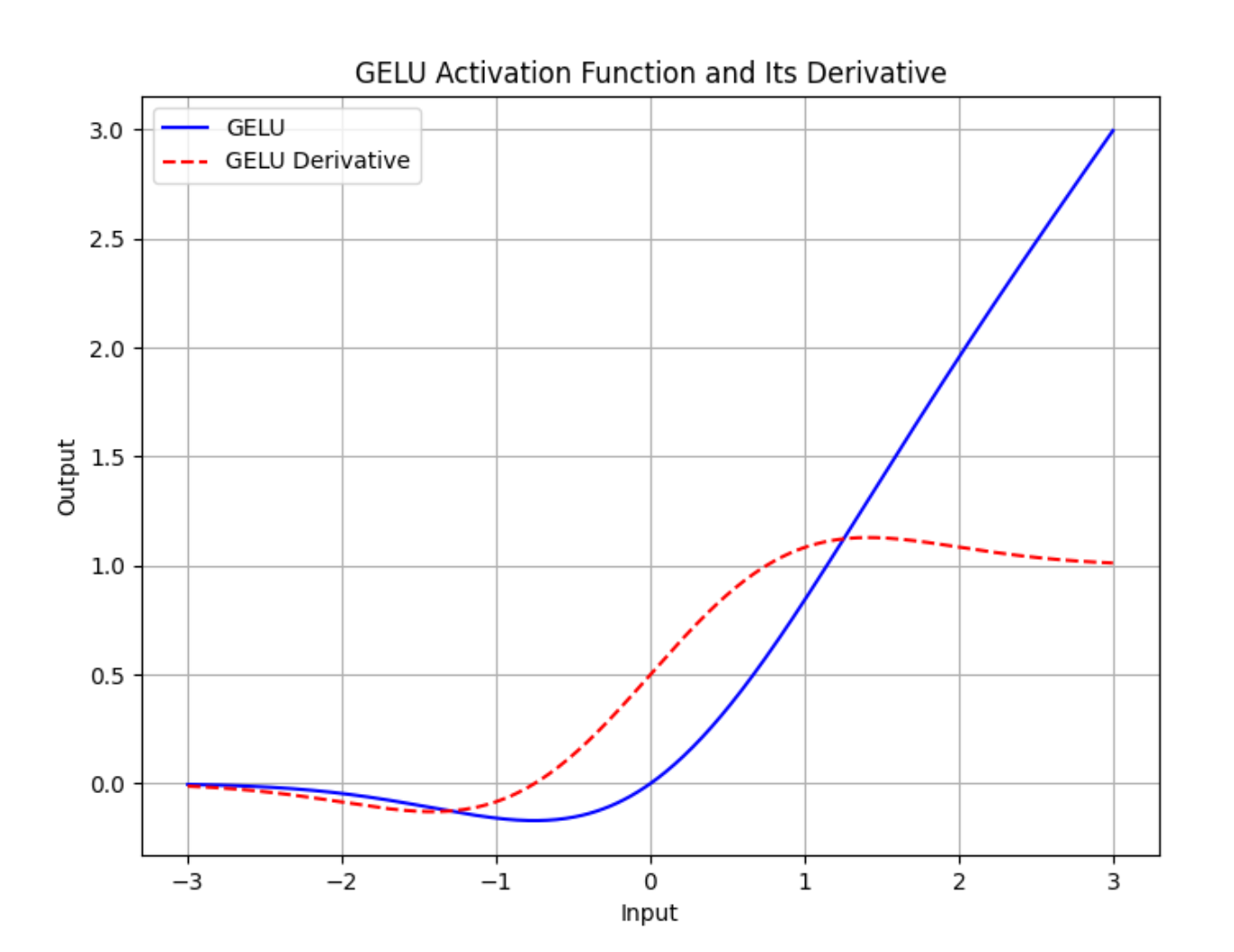
【深度学习】GELU激活函数是什么?
torch.nn.GELU 模块在 PyTorch 中实现了高斯误差线性单元(GELU)激活函数。GELU 被用于许多深度学习模型中,包括Transformer,因为它相比传统的 ReLU(整流线性单元)函数能够更好地近似神经元的真实激活行为。…...

如何编译和运行您的第一个Java程序
如何编译和运行您的第一个Java程序 让我们从一个简单的java程序开始。 简单的Java程序 这是一个非常基本的java程序,它会打印一条消息“这是我在java中的第一个程序”。 public class FirstJavaProgram {public static void main(String[] args){System.…...

vscode用vue框架写一个登陆页面
目录 一、创建登录页面 二、构建好登陆页面的路由 三、编写登录页代码 1.添加基础结构 2.给登录页添加背景 3.解决填充不满问题 4.我们把背景的红颜色替换成背景图: 5.在页面中央添加一个卡片来显示登录页面 6.设置中间卡片页面的左侧 7.设置右侧的样式及…...

腾讯云API安全保障措施?有哪些调用限制?
腾讯云API的调用效率如何优化?怎么使用API接口发信? 腾讯云API作为腾讯云提供的核心服务之一,广泛应用于各行各业。然而,随着API应用的普及,API安全问题也日益突出。AokSend将详细探讨腾讯云API的安全保障措施&#x…...

在建设工程合同争议案件中,如何来认定“竣工验收”?
在建设工程合同争议案件中,如何来认定“竣工验收”? 建设工程的最终竣工验收,既涉及在建设单位组织下的五方单位验收,又需政府质量管理部门的监督验收以及竣工验收备案,工程档案还需递交工程所在地的工程档案馆归档。…...
Linux:多线程中的互斥与同步
多线程 线程互斥互斥锁互斥锁实现的原理封装原生线程库封装互斥锁 死锁避免死锁的四种方法 线程同步条件变量 线程互斥 在多线程中,如果存在有一个全局变量,那么这个全局变量会被所有执行流所共享。但是,资源共享就会存在一种问题࿱…...

数据仓库之主题域
数据仓库的主题域(Subject Area)是按照特定业务领域或主题对数据进行分类和组织的方式。每个主题域集中反映一个特定的业务方面,使得数据分析和查询更加清晰和高效。主题域通常与企业的关键业务过程相关,能够帮助用户在数据仓库中…...

【简易版tinySTL】 vector容器
文章目录 基本概念功能思路代码实现vector.htest.cpp 代码详解变量构造函数析构函数拷贝构造operatorpush_backoperator[]insertprintElements 本实现版本 和 C STL标准库实现版本的区别: 基本概念 vector数据结构和数组非常相似,也称为单端数组vector与…...

BRAVE:扩展视觉编码能力,推动视觉-语言模型发展
视觉-语言模型(VLMs)在理解和生成涉及视觉与文本的任务上取得了显著进展,它们在理解和生成结合视觉与文本信息的任务中扮演着重要角色。然而,这些模型的性能往往受限于其视觉编码器的能力。例如,现有的一些模型可能对某…...

使用 Verdaccio 建立私有npm库
网上有很多方法,但很多没标注nginx的版本所以踩了一些坑,下方这个文档是完善后的,对linux不是很熟练,所以不懂linux不会搭建的跟着做就可以了 搭建方法 首先需要一台云服务器 以139.196.226.123为例登录云服务器 下载node cd /usr/local/lib下载node 解压 下载 wget https://…...
)
个人职业规划(含前端职业+技术线路)
1. 了解自己的兴趣与长处 喜欢擅长的事 职业方向 2. 设定长期目标(5年) 目标内容 建立自己的品牌建立自己的社交网络 适量参加社交活动,认识更多志同道合的小伙伴寻求导师指导 建立自己的作品集 注意事项 每年元旦进行审视和调整永葆积极…...
LeetCode | 344.反转字符串
设置头尾两个指针,依靠中间变量temp交换头尾指针所指元素,头指针后移,尾指针前移,直到头尾指针重合或者头指针在尾指针后面一个元素 class Solution(object):def reverseString(self, s):""":type s: List[str]:r…...

一步一步用numpy实现神经网络各种层
1. 首先准备一下数据 if __name__ "__main__":data np.array([[2, 1, 0],[2, 2, 0],[5, 4, 1],[4, 5, 1],[2, 3, 0],[3, 2, 0],[6, 5, 1],[4, 1, 0],[6, 3, 1],[7, 4, 1]])x data[:, :-1]y data[:, -1]for epoch in range(1000):...2. 实现SoftmaxCrossEntropy层…...
)
vue学习(二)
9.vue中的数据代理 通过vm对象来代理data对象中的属性操作(读写),目的是为了更加方便操作data中的数据 基本原理:通过Object.defineProperty()把data对象所有属性添加到vm上,为每一个添加到vm上的属性,都增…...
Maven 介绍
Maven open in new window 官方文档是这样介绍的 Maven 的: Apache Maven is a software project management and comprehension tool. Based on the concept of a project object model (POM), Maven can manage a projects build, reporting and documentation fr…...

QT截图程序三-截取自定义多边形
上一篇文章QT截图程序,可多屏幕截图二,增加调整截图区域功能-CSDN博客描述了如何截取,具备调整边缘功能后已经方便使用了,但是与系统自带的程序相比,似乎没有什么特别,只能截取矩形区域。 如果可以按照自己…...

Unity的三种Update方法
1、FixedUpdate 物理作用——处理物理引擎相关的计算和刚体的移动 (1) 调用时机:在固定的时间间隔内,而不是每一帧被调用 (2) 作用:用于处理物理引擎的计算,例如刚体的移动和碰撞检测 (3) 特点:能更准确地处理物理…...

[Python学习篇] Python字典
字典是一种可变的、无序的键值对(key-value)集合。字典在许多编程(Java中的HashMap)任务中非常有用,因为它们允许快速查找、添加和删除元素。字典使用花括号 {} 表示。字典是可变类型。 语法: 变量 {key1…...

react项目中如何书写css
一:问题: 在 vue 项目中,我们书写css的方式很简单,就是在 .vue文件中写style标签,然后加上scope属性,就可以隔离当前组件的样式,但是在react中,是没有这个东西的,如果直…...
详解)
后进先出(LIFO)详解
LIFO 是 Last In, First Out 的缩写,中文译为后进先出。这是一种数据结构的工作原则,类似于一摞盘子或一叠书本: 最后放进去的元素最先出来 -想象往筒状容器里放盘子: (1)你放进的最后一个盘子(…...
多模态2025:技术路线“神仙打架”,视频生成冲上云霄
文|魏琳华 编|王一粟 一场大会,聚集了中国多模态大模型的“半壁江山”。 智源大会2025为期两天的论坛中,汇集了学界、创业公司和大厂等三方的热门选手,关于多模态的集中讨论达到了前所未有的热度。其中,…...

突破不可导策略的训练难题:零阶优化与强化学习的深度嵌合
强化学习(Reinforcement Learning, RL)是工业领域智能控制的重要方法。它的基本原理是将最优控制问题建模为马尔可夫决策过程,然后使用强化学习的Actor-Critic机制(中文译作“知行互动”机制),逐步迭代求解…...

【Java学习笔记】Arrays类
Arrays 类 1. 导入包:import java.util.Arrays 2. 常用方法一览表 方法描述Arrays.toString()返回数组的字符串形式Arrays.sort()排序(自然排序和定制排序)Arrays.binarySearch()通过二分搜索法进行查找(前提:数组是…...
Day131 | 灵神 | 回溯算法 | 子集型 子集
Day131 | 灵神 | 回溯算法 | 子集型 子集 78.子集 78. 子集 - 力扣(LeetCode) 思路: 笔者写过很多次这道题了,不想写题解了,大家看灵神讲解吧 回溯算法套路①子集型回溯【基础算法精讲 14】_哔哩哔哩_bilibili 完…...
centos 7 部署awstats 网站访问检测
一、基础环境准备(两种安装方式都要做) bash # 安装必要依赖 yum install -y httpd perl mod_perl perl-Time-HiRes perl-DateTime systemctl enable httpd # 设置 Apache 开机自启 systemctl start httpd # 启动 Apache二、安装 AWStats࿰…...

MMaDA: Multimodal Large Diffusion Language Models
CODE : https://github.com/Gen-Verse/MMaDA Abstract 我们介绍了一种新型的多模态扩散基础模型MMaDA,它被设计用于在文本推理、多模态理解和文本到图像生成等不同领域实现卓越的性能。该方法的特点是三个关键创新:(i) MMaDA采用统一的扩散架构…...

工程地质软件市场:发展现状、趋势与策略建议
一、引言 在工程建设领域,准确把握地质条件是确保项目顺利推进和安全运营的关键。工程地质软件作为处理、分析、模拟和展示工程地质数据的重要工具,正发挥着日益重要的作用。它凭借强大的数据处理能力、三维建模功能、空间分析工具和可视化展示手段&…...

Spring Boot+Neo4j知识图谱实战:3步搭建智能关系网络!
一、引言 在数据驱动的背景下,知识图谱凭借其高效的信息组织能力,正逐步成为各行业应用的关键技术。本文聚焦 Spring Boot与Neo4j图数据库的技术结合,探讨知识图谱开发的实现细节,帮助读者掌握该技术栈在实际项目中的落地方法。 …...

Ascend NPU上适配Step-Audio模型
1 概述 1.1 简述 Step-Audio 是业界首个集语音理解与生成控制一体化的产品级开源实时语音对话系统,支持多语言对话(如 中文,英文,日语),语音情感(如 开心,悲伤)&#x…...
